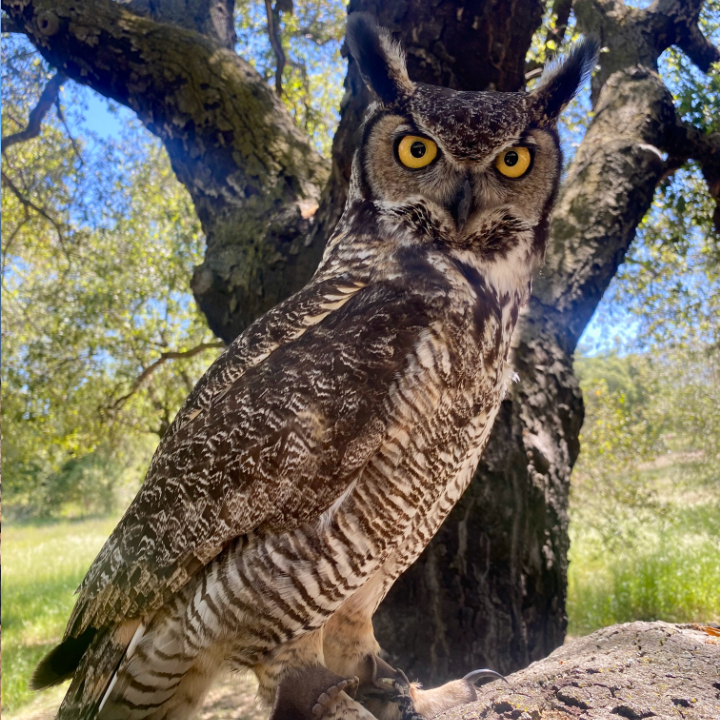The elusive Great Horned owl, Bubo virginianus, is one of the most common owl species in North America. Their distinct feather pattern and coloring allows them to camouflage themselves against tree bark and blend seamlessly. Thus, they are often heard more than they are seen. A fascinating new book published this year by Jennifer Ackerman, “What an Owl Knows” delves into the complex lives of owls, including their vocalizations. We strongly recommend giving it a read if you are interested in learning more about owls.
The hoot is the most common sound heard from the Great Horned Owl. After hundreds of hours of meticulous observation, 15 separate vocalizations have been characterized. Six of these are hoots, along with chitters, and squawks. They will also hiss and snap their beaks when threatened or fearful. Clearly, not just the hoot we so commonly associate to them. Amazingly, they begin vocalizing while still in the egg, a couple of days before hatching. At two weeks old, owlets will start their iconic hooting, posturing along with it as the adults do, leaning forward and titling the tail skyward. The hoot is used for multiple purposes: to establish their territory, to court and communicate with a partner, as well as duel with potential trespassers.
So, when you hear the hoot, pay close attention, perhaps there are other sounds that follow. What you may have associated to other birds or animals could actually be the Great Horned Owl!
To experience an up-close and intimate encounter with our Great Horned Owl, Tig, join us for a Private Raptor Experience. To learn more, click here. We look forward to having a hoot with you!

